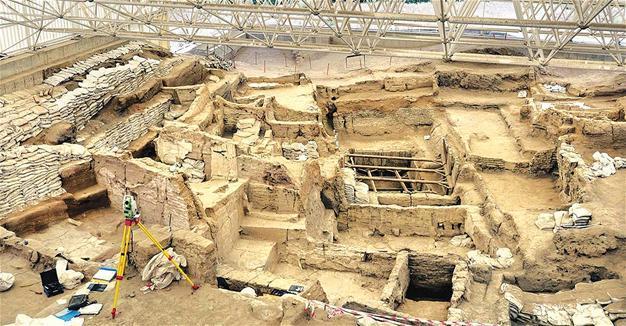Mystery of Çatalhöyük’s early structures to be solved soon
ISTANBUL
 An excavation team that has been working at Çatalhöyük in Central Anatolia for decades has come the closest yet to solving some of the mysteries surrounding the Neolithic site’s earliest structures, according to the head of the dig.
An excavation team that has been working at Çatalhöyük in Central Anatolia for decades has come the closest yet to solving some of the mysteries surrounding the Neolithic site’s earliest structures, according to the head of the dig.“Last year, we carried out works with a core team including 12 excavators and 15 laboratory experts, aiming to reach the lowest layer and the earliest structures. But because the excavation season is short, we decided to continue excavations this year, too,” said Professor Ian Hodder, the head of the Çatalhöyük excavations.
“We made interesting finds in 2016. We unearthed two female figurines in the eastern mound. Our examinations showed that they belonged to prestigious and respected women in the society,” he said, noting that previous excavations on the eastern mound in 1999 revealed only garbage dumps and sheep pens rather than houses.
“Works continued to reach the lowest layer in the southern field. I believe that we will be able to unearth the earliest structures in Çatalhöyük during the works we will continue this year,” Hodder said.
Located in what is now Konya, Çatalhöyük provides traces of humanity’s transition from settled villages to urban agglomeration over 9,000 years ago.
Among the finds in 2016 were a mace head, an obsidian arrow of the highest quality ever, bone and ceramic objects in the northern field, as well as many other objects in the southern part.
In the region known as Building 1, two flint stone daggers and a scallop shell were unearthed.
Detailed works in the northern field have also unearthed places of activity, fireplaces and working places. Scholars also learned important information about the use of external spaces.
According to a written statement by Yapı Kredi, which has sponsored the works since 1997, efforts began on social media in 2016 to provide information about Çatalhöyük to a wider mass of people.
At the same time, a mobile application is also being developed for visitors to Çatalhöyük.
In honor of recent excavations at Çatalhöyük, Koç University’s Research Center for Anatolian Civilizations (ANAMED) will open an exhibition on June 21 this year.
Unknown facts about Çatalhöyük and details about the past 25 years of excavations will be shown at the exhibition with contemporary and interactive display techniques.
















